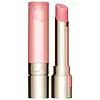What's inside
What's inside
 Key Ingredients
Key Ingredients

 Benefits
Benefits

 Concerns
Concerns

 Ingredients Side-by-side
Ingredients Side-by-side

Ricinus Communis Seed Oil
MaskingHydrogenated Vegetable Oil
EmollientButyrospermum Parkii Butter
Skin ConditioningBis-Diglyceryl Polyacyladipate-2
EmollientHelianthus Annuus Seed Wax
Skin ConditioningOctyldodecanol
EmollientPolyglyceryl-2 Triisostearate
EmulsifyingCorylus Avellana Seed Oil
EmollientRosa Moschata Seed Oil
EmollientSimmondsia Chinensis Seed Oil
EmollientTheobroma Cacao Seed Butter
EmollientEthylhexyl Palmitate
EmollientTocopherol
AntioxidantCI 77891
Cosmetic ColorantTocopheryl Acetate
AntioxidantDiethylhexyl Syringylidenemalonate
Skin ProtectingMacadamia Ternifolia Seed Oil
EmollientParfum
MaskingDicalcium Phosphate
AbrasiveTribehenin
EmollientHelianthus Annuus Seed Oil
EmollientCaprylic/Capric Triglyceride
MaskingCI 19140
Cosmetic ColorantSorbitan Isostearate
EmulsifyingCI 15850
Cosmetic ColorantLactic Acid
BufferingPalmitoyl Tripeptide-1
Skin ConditioningRicinus Communis Seed Oil, Hydrogenated Vegetable Oil, Butyrospermum Parkii Butter, Bis-Diglyceryl Polyacyladipate-2, Helianthus Annuus Seed Wax, Octyldodecanol, Polyglyceryl-2 Triisostearate, Corylus Avellana Seed Oil, Rosa Moschata Seed Oil, Simmondsia Chinensis Seed Oil, Theobroma Cacao Seed Butter, Ethylhexyl Palmitate, Tocopherol, CI 77891, Tocopheryl Acetate, Diethylhexyl Syringylidenemalonate, Macadamia Ternifolia Seed Oil, Parfum, Dicalcium Phosphate, Tribehenin, Helianthus Annuus Seed Oil, Caprylic/Capric Triglyceride, CI 19140, Sorbitan Isostearate, CI 15850, Lactic Acid, Palmitoyl Tripeptide-1
 Reviews
Reviews

Ingredients Explained
These ingredients are found in both products.
Ingredients higher up in an ingredient list are typically present in a larger amount.
Helianthus Annuus Seed Oil is the oil derived from the seeds of a Sunflower. Sunflower seed oil is non-fragrant. It is an emollient, meaning it helps to soften the skin.
Sunflower seed oil contains many fatty acids. The fatty acids found in sunflower seeds include (from highest amount to least): linoleic acid, myristic acid, palmitic acid, stearic acid, arachidic acid, oleic acid, and linolenic acid.
These fatty acids help the skin create ceramides. Ceramides play a role in repairing the skin barrier.
Helianthus Annuus Seed Oil helps moisturize the skin. This in turn helps the skin look more rejuvenated and smoother.
Sunflowers are rich in vitamin E.
Historians believe Indigenous cultures of North America domesticated sunflowers before corn. Thus they relied on sunflower oil for a variety of uses. One such use is moisturizing skin and hair.
Sunflower seed oil may not be fungal acne safe. We recommend speaking with a professional if you have any concerns.
Learn more about Helianthus Annuus Seed OilParfum is a catch-all term for an ingredient or more that is used to give a scent to products.
Also called "fragrance", this ingredient can be a blend of hundreds of chemicals or plant oils. This means every product with "fragrance" or "parfum" in the ingredients list is a different mixture.
For instance, Habanolide is a proprietary trade name for a specific aroma chemical. When used as a fragrance ingredient in cosmetics, most aroma chemicals fall under the broad labeling category of “FRAGRANCE” or “PARFUM” according to EU and US regulations.
The term 'parfum' or 'fragrance' is not regulated in many countries. In many cases, it is up to the brand to define this term.
For instance, many brands choose to label themselves as "fragrance-free" because they are not using synthetic fragrances. However, their products may still contain ingredients such as essential oils that are considered a fragrance by INCI standards.
One example is Calendula flower extract. Calendula is an essential oil that still imparts a scent or 'fragrance'.
Depending on the blend, the ingredients in the mixture can cause allergies and sensitivities on the skin. Some ingredients that are known EU allergens include linalool and citronellol.
Parfum can also be used to mask or cover an unpleasant scent.
The bottom line is: not all fragrances/parfum/ingredients are created equally. If you are worried about fragrances, we recommend taking a closer look at an ingredient. And of course, we always recommend speaking with a professional.
Learn more about ParfumTheobroma Cacao Seed Butter comes from the Theobroma cacoa, or Cacao tree. Cacao trees are native to tropical landscapes.
Like other plant butters, Cacao seed butter is an emollient. Emollients help soothe and soften your skin. By creating a barrier to trap moisture in, emollients help keep your skin hydrated.
Cacao seed butter contains antioxidants known as polyphenols. Antioxidants help fight free-radical molecules by stabilizing them. Unstable free-radicals may cause damage to your skin cells. Antioxidants may help with anti-aging.
Theobroma Cacao Seed Butter can be bad for acne prone skin.
Learn more about Theobroma Cacao Seed ButterTocopheryl Acetate is AKA Vitamin E. It is an antioxidant and protects your skin from free radicals. Free radicals damage the skin by breaking down collagen.
One study found using Tocopheryl Acetate with Vitamin C decreased the number of sunburned cells.
Tocopheryl Acetate is commonly found in both skincare and dietary supplements.
Learn more about Tocopheryl Acetate